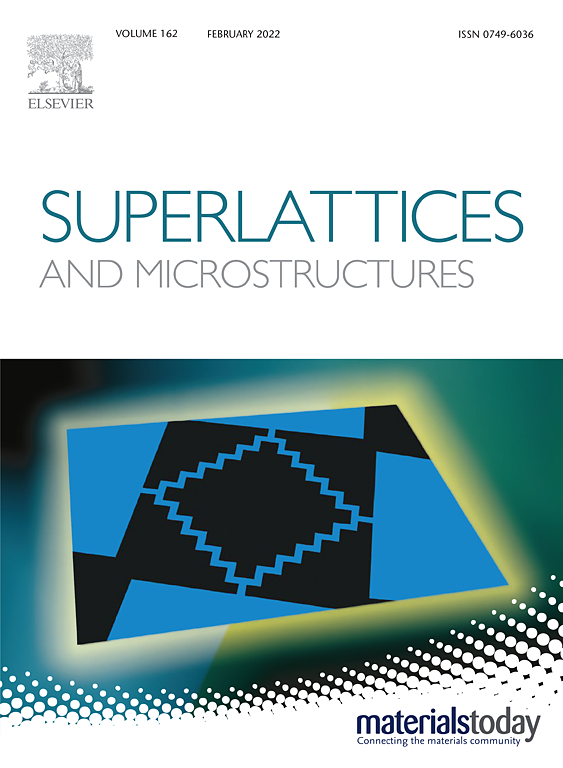Low neutron cross-section FeCrVTiNi based high-entropy alloys: design, additive manufacturing and characterization
IF 3.3
3区 物理与天体物理
Q2 PHYSICS, CONDENSED MATTER
引用次数: 5
Abstract
The development of high-entropy alloys (HEAs) based on the novel alloying concept of multi-principal components presents opportunities for achieving new materials with desired properties for increasingly demanding applications. In this study, a low neutron cross-section FeCrVTiNi-based HEA was developed for potential nuclear applications. A face-centred cubic (FCC) HEA with the nominal composition of FeCr0.4V0.3Ti0.2Ni1.3 is proposed based on the empirical thermodynamic models and the CALculation of PHAse diagrams (CALPHAD) calculation. Verifications of the predictions were performed, including the additive manufacturing of the proposal material and a range of microstructural characterizations and mechanical property tests. Consistent with the prediction, the as-fabricated HEA consists of a dominant FCC phase and minor Ni3Ti precipitates. Moreover, significant chemical segregation in the alloy, as predicted by the CALPHAD modelling, was observed experimentally in the produced dendritic microstructure showing the enrichment of Ni and Ti elements in the interdendritic regions and the segregation of Cr and V elements in the dendritic cores. Heterogenous mechanical properties, including microhardness and tensile strengths, were observed along the building direction of the additively manufactured HEA. The various solid solution strengthening effects, due to the chemical segregation (in particular Cr and V elements) during solidification, are identified as significant contributing factors to the observed mechanical heterogeneity. Our study provides useful knowledge for the design and additive manufacturing of compositionally complex HEAs and their composition-microstructure-mechanical property correlation.低中子截面FeCrVTiNi基高熵合金:设计、增材制造和表征
基于多主成分合金新概念的高熵合金(HEAs)的发展为获得具有期望性能的新材料提供了机会,以满足日益苛刻的应用要求。在这项研究中,基于低中子截面fecrvti的HEA被开发用于潜在的核应用。基于经验热力学模型和相图计算(CALPHAD)计算,提出了一种名义成分为FeCr0.4V0.3Ti0.2Ni1.3的面心立方HEA (FCC)。对预测进行了验证,包括提议材料的增材制造和一系列微观结构表征和机械性能测试。与预测一致,制备的HEA主要由FCC相和少量Ni3Ti相组成。此外,正如CALPHAD模型预测的那样,在实验中观察到合金中存在明显的化学偏析,在生成的枝晶组织中,Ni和Ti元素在枝晶间区域富集,Cr和V元素在枝晶核心中偏析。沿增材制造的HEA的构建方向观察到非均质力学性能,包括显微硬度和拉伸强度。由于凝固过程中的化学偏析(特别是Cr和V元素),各种固溶体强化效应被认为是造成观察到的机械非均质性的重要因素。本研究为结构复杂的HEAs的设计和增材制造及其组成-显微组织-力学性能的相关性提供了有益的知识。
本文章由计算机程序翻译,如有差异,请以英文原文为准。
求助全文
约1分钟内获得全文
求助全文
来源期刊

Superlattices and Microstructures
物理-物理:凝聚态物理
CiteScore
6.10
自引率
3.20%
发文量
35
审稿时长
2.8 months
期刊介绍:
Superlattices and Microstructures has continued as Micro and Nanostructures. Micro and Nanostructures is a journal disseminating the science and technology of micro-structures and nano-structures in materials and their devices, including individual and collective use of semiconductors, metals and insulators for the exploitation of their unique properties. The journal hosts papers dealing with fundamental and applied experimental research as well as theoretical studies. Fields of interest, including emerging ones, cover:
• Novel micro and nanostructures
• Nanomaterials (nanowires, nanodots, 2D materials ) and devices
• Synthetic heterostructures
• Plasmonics
• Micro and nano-defects in materials (semiconductor, metal and insulators)
• Surfaces and interfaces of thin films
In addition to Research Papers, the journal aims at publishing Topical Reviews providing insights into rapidly evolving or more mature fields. Written by leading researchers in their respective fields, those articles are commissioned by the Editorial Board.
Formerly known as Superlattices and Microstructures, with a 2021 IF of 3.22 and 2021 CiteScore of 5.4
 求助内容:
求助内容: 应助结果提醒方式:
应助结果提醒方式:


